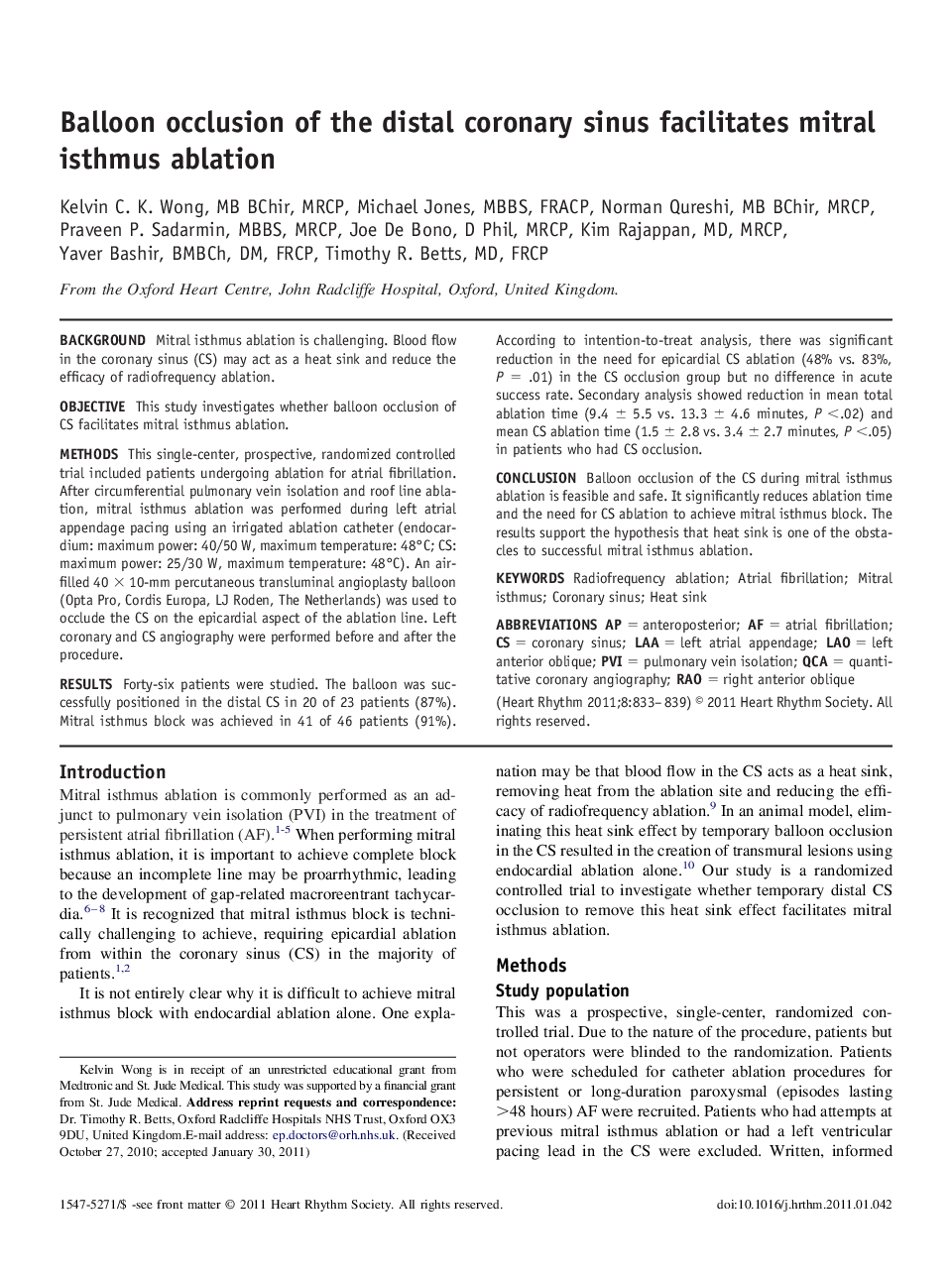| کد مقاله | کد نشریه | سال انتشار | مقاله انگلیسی | نسخه تمام متن |
|---|---|---|---|---|
| 2922979 | 1175860 | 2011 | 7 صفحه PDF | دانلود رایگان |

BackgroundMitral isthmus ablation is challenging. Blood flow in the coronary sinus (CS) may act as a heat sink and reduce the efficacy of radiofrequency ablation.ObjectiveThis study investigates whether balloon occlusion of CS facilitates mitral isthmus ablation.MethodsThis single-center, prospective, randomized controlled trial included patients undergoing ablation for atrial fibrillation. After circumferential pulmonary vein isolation and roof line ablation, mitral isthmus ablation was performed during left atrial appendage pacing using an irrigated ablation catheter (endocardium: maximum power: 40/50 W, maximum temperature: 48°C; CS: maximum power: 25/30 W, maximum temperature: 48°C). An air-filled 40 × 10-mm percutaneous transluminal angioplasty balloon (Opta Pro, Cordis Europa, LJ Roden, The Netherlands) was used to occlude the CS on the epicardial aspect of the ablation line. Left coronary and CS angiography were performed before and after the procedure.ResultsForty-six patients were studied. The balloon was successfully positioned in the distal CS in 20 of 23 patients (87%). Mitral isthmus block was achieved in 41 of 46 patients (91%). According to intention-to-treat analysis, there was significant reduction in the need for epicardial CS ablation (48% vs. 83%, P = .01) in the CS occlusion group but no difference in acute success rate. Secondary analysis showed reduction in mean total ablation time (9.4 ± 5.5 vs. 13.3 ± 4.6 minutes, P <.02) and mean CS ablation time (1.5 ± 2.8 vs. 3.4 ± 2.7 minutes, P <.05) in patients who had CS occlusion.ConclusionBalloon occlusion of the CS during mitral isthmus ablation is feasible and safe. It significantly reduces ablation time and the need for CS ablation to achieve mitral isthmus block. The results support the hypothesis that heat sink is one of the obstacles to successful mitral isthmus ablation.
Journal: Heart Rhythm - Volume 8, Issue 6, June 2011, Pages 833–839